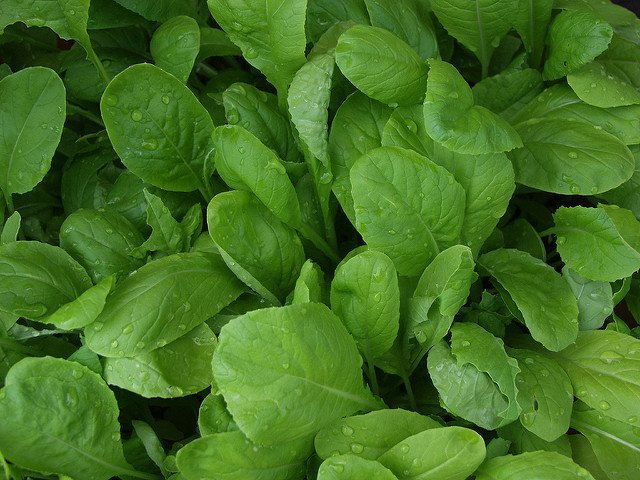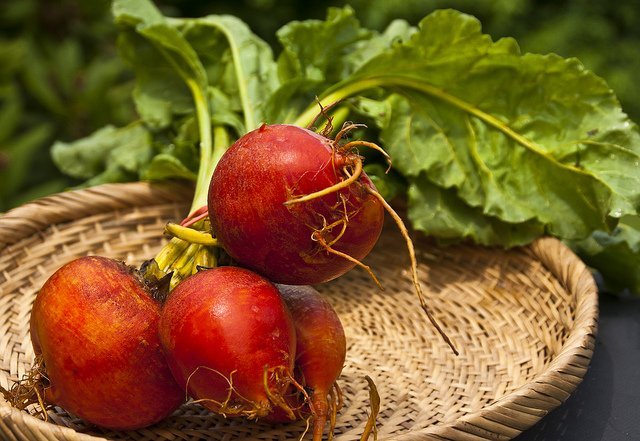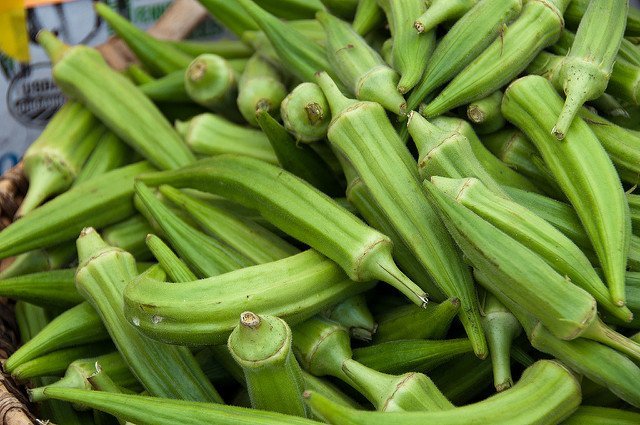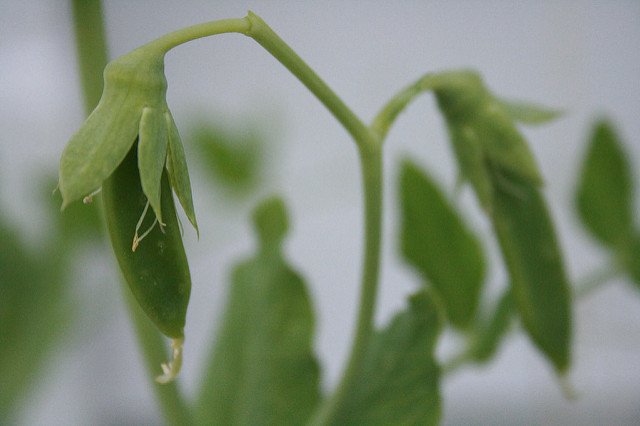
A Dozen or More Plants That Provide Quickly and Abundantly
I am for a new system of food production in which we utilize perennial plants more, slowly replacing our tendency to eat, nearly exclusively, annuals with a diet better suited to self-sustaining, soil-building, long-living agricultural ecosystems. I know these systems, in the end, will serve us better as a planet (humanity having to exist on said planet), has the potential to provide well-balanced abundance, and give us lives less reliant on toil, gardens less prone to turmoil.
However, I also know—all too well—that perennial food forests don’t happen overnight. We must begin somewhere, and during that time, there is no escaping the need to eat. I also know that many beginning cultivators aren’t yet instilled with the patience required to create gardens, waiting years for some sort of viable return. In other words, while in favor of moving towards these cultivated ecosystems, there is no doubt a place for fast-growing vegetables that put dinner on the table now.
Frankly, it’s these types of crops, ones that provide food in just a few weeks, which are likely to make people interested in growing more. It’s crops like these that provide food while the fruit trees are maturing, the nut trees slowly inching upwards, the perennial veggie patches easing their way into production. It’s these crops that can fill our kitchen gardens, almost instantly, with loads of excitement and anticipation. We could be eating in around month or more, and that’s probably reason enough to get some in the ground now.
Dark, Leafy Greens

In general, greens are a great way to start any garden, providing a nice, edible ground cover and easily attained early success. And, truth be told, the information from the following list can be applied to many other greens, many of which come from the same family roots. I like these because they are particularly delicious in my opinion, and I have a bit of experience with them.
Arugula/rocket is a delicious green with a spicy kick, and the first salads can be harvested from them in about a month. It’s a late spring, early autumn crop that tends to bolt when things get too hot. However, I’ve seen it self-propagated endlessly in the places like areas of southern Spain and the mountains of Guatemala, where the temperature extremes aren’t so great. And, if there a next best thing to perennial plants, it might be annuals that handle planting themselves. In harsher climates, leave them alone and the spring harvest will seed the fall crop, which when mulched for overwintering can pop up next spring.
Broccoli raab is more mustard than broccoli. Regardless, it’s a green common in Italy but getting a lot more international attention these days, and it’s another fast grower (some varieties provide in just 40 days). It is also another cool weather crop that can be harvested from continuously, again, in the right setting, with a climate like the one I’m fortunate enough to live in. Otherwise, when the summer heat hits full steam, it will bolt and self-seed for an autumn harvest, once again creating a productive annual cycle for lazy growers who prefer labor-free cultivation as much as possible.
Mustard greens are another fast-producing cool weather crop. Of course, mustard is better known for the “classic yellow” and Dijon incarnations of its seeds, but the greens are absolutely delicious and can be harvested continuously (sensing a pattern) while the plant is growing. And, it behaves just like the previous greens from the list: Hot weather sends it reaching for the sky, it goes to seed, and they self-sow just in time for the next season. The other great aspect here is that the seeds are of great culinary value as well, and beyond a condiment, they are a common ingredient in curries and various dipping sauces.
Other leafy possibilities for food in under eight weeks include bok choy, cress, kale, collard, spinach, Swiss chard, and the ubiquitous “mesclun mix”, typically composed of chervil, arugula, endive, and other leafy lettuces.
Roots

Though not often thought of as quick crops, root vegetables do have a few offerings for the impatient food producer. They aren’t the starchiest of choices, but they are flavorful and provide plenty healthy vitamins and minerals. Plus, they are something to pull out of the garden quickly to make room for other stuff, i.e. they are great companion plants.
Radishes have quietly become one of my favorite vegetables for sneaking into stuff. They have a nice spice, a good burst of moistness, a flash of color, a crack of crunch, and edible greens to boot. They grow fast, maturing in less than a month, and are a beloved companion plant because of it. They can be planted betwixt slower growing things (carrots being a popular choice), and they are gone before it gets crowded. Frankly, I’ve taken to eating whole radishes, as they are, for a snack. For bigger results that take a bit longer (about two months), go in for a permaculture favorite: daikon radish.
Beets take a little longer, around two months. They are cold weather crop, able to survive frosts and temperatures approaching freezing. Most of us associate beets with the deep red juice that gets all over everything, or borscht. However, there are golden beets, striped beets and and various other varieties. They are great for adding sweetness to salad dressings, make awesome pickles, or additions to mixed root vegetable roasts. Once, again, the greens are edible. Beets also have a good shelf life.
Turnips are another quick root vegetable, and they are actually biennials typically grown as annuals. They are cultivated both for the root and the green, which is very popular cooked down low and slow, at least where I’m from (Louisiana). They, as is the case with the other two roots, should be sown directly as they are not great fans of the transplant. The roots can be boiled and pureed for soup, steamed with a buttery drizzle and fresh herbs, or sliced and eaten raw.
Another good option for those hungry now rather than later is to harvest young, or new, potatoes, which are ready about 50 days after planting, around the time—or a week or two after—blossoms appear.
Vegetables

Most vegetables we are accustomed to finding on supermarket shelves take three or more months to start yielding, but there are a few good choices for a fast turn around from seed to food. Without squabbling over technical classifications, these are vegetables—in the most familiar sense of the word—that fruit in eight weeks or less.
Okra is hot weather/hot climate crop that is another quick-growing choice wildly popular in Louisiana, as well as India, parts of Central America and various other hot and muggy climates. It likes sweltering heat and plenty of water. In climates with true winters, it’s fast enough to be grown as an annual, providing pods at about 60 days, but in the right setting, one that stays above freezing, it is a perennial. When the getting is good, plants produce a lot and should be harvested daily. What a problem to have.
Summer Squash, those thin-skinned versions that frolic in the sun, are smaller than the autumn and winter varieties. Consequently, they can be ready for harvesting within about seven weeks. These plants make great sprawling ground covers for stalking plants, like corn and pole beans, which they are classically combined with. My favorite is yellow squash, something I’ve not found readily around the world, but more common is zucchini, which seems to be everywhere.
Unlike cooler weather squashes, these don’t store fresh for long.
Cucumbers are no stranger to anyone. They are a salad favorite, popular for pickling, and are a great addition to smoothies and other refreshing summer drinks. They are just another member of the squash family, and they should start producing right at about the two-month mark. I fell hard for lemon cucumbers while working in Panama. We never planted any. They just showed up one day (from birds we guessed) and fruited in abundance. They made fantastic quick pickles, with the slight citrus flavor really shining through.
There aren’t many other vegetable-vegetables that I know of that make this list. Broccoli is sometimes included on quick-grow collections, but it takes a little longer, around ten weeks, as does corn.
Legumes

Lastly, we’ll get some beans and peas on the go, hopefully with some help fixing the soil, working to provide these other nutrient-gobbling annuals with natural fertilization. And, of course, the point of growing these guys is to put something on the dinner table quickly as well.
“Snap” Beans, or green beans, are familiar favorite, and when planted as bushes rather than vines, they can be harvested at about 60 days They do fix nitrogen, though it isn’t as impressively as other legumes. The key here is that we aren’t waiting for the beans to fully mature, so we get them earlier. Nevertheless, there are many different types of green beans to choose from, plants tend to give generously, and beans can be harvested every couple of days while producing.
Sugar Snap Peas, continuing on with our snapping, are another legume eaten, like snap beans, shell and all. They are also a nitrogen-fixer, so they’ll help keep the soil up to snuff. Again, they grow quickly, giving peas in about eight weeks. They work in salads, by steam, or amongst stir-fried veggies. They are also great for snacking in the garden, right off the plant, when no one is looking.
Snow peas are often confused with snap peas, but they are not the same. Snap peas are actually a cross between snow peas and garden peas. Whatever the case, these are delicious and are also eaten pod and all. They produce quickly, fix nitrogen in the soil, and require little maintenance, other than regular harvesting. They—as should any legume, really—be planted directly into the soil, and the nitrogen-fixing can be increased by coating the seeds in inoculant.
These legumes are great for some quick production and delicious to eat, but for really effective nitrogen-fixing, it’s best to get some perennials planted as well. Pigeon peas are the star of warmer climates, while Siberian and Russian peas are the perennial choice for colder climates. Scarlet runner beans are a more beany-choice, as well as a perennial vine element for the food forest.
By no means should these replace the pursuit of perennial plants, but they are great, easy, fast additions to gardens in need of a little inspiration. For that matter, they can all be grown as pot plants. Plus, twelve-plus varieties of food production isn’t too shabby, and to think it’s possible to get there in two months, well, that’s smile-inducing notion.
Feature Image: Lemon Cucumber (Courtesy of Megan Hansen)












